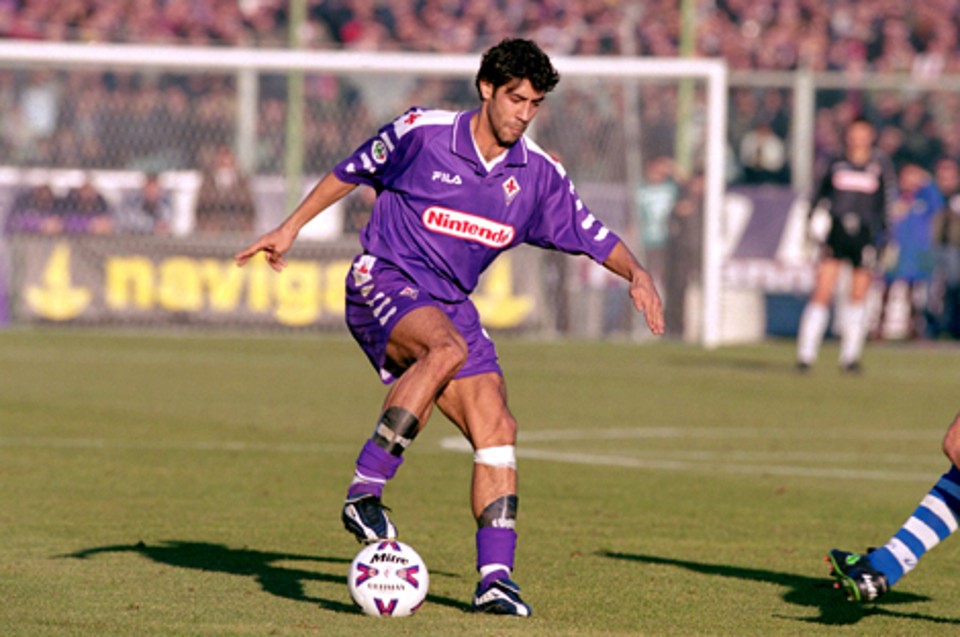The Renaissance city of Florence is legendary for creating literary and artistic masterpieces. The work of greats such as Donatello, Andrea del Verrocchio and Dante have left an ever present mark on the city, and indeed the world.
In footballing terms, there is one ‘artist’ who made a huge impression on the fans of the city’s football team: Rui Manuel César Costa. A Portuguese master whose chosen canvas was that of the Stadio Artemio Franchi, the home of ACF Fiorentina.
He arrived in 1994 from Benfica, who – consumed by a financial meltdown – had to sell their prized asset. The young playmaker was entrusted with the esteemed number 10 shirt, an honour at any Italian club, and with the likes of Giancarlo Antognoni and Roberto Baggio having worn it in the past, it carried special significance to the passionate Viola fans.
Rui Costa was a true “fantasista” and the number 10 shirt was a perfect fit. The Portuguese maestro was not burdened with the weight of responsibility, and instead the man from Amadora flourished. It did not hurt that his strike partner was Argentine Gabriel Batistuta, and together they were one of the best ever number 9 and 10 partnerships Serie A has seen.
Any lack of pace was compensated for by Costa’s quick mind. His footballing brain could foresee things on the field that few others could, using his technical ability to find an improbable pass or playing his trade-mark perfectly weighted through ball. Not inhibited by playing in one area of the pitch, he was given a truly free role, but as a genuine team player, his work was never for individual glory.
Although he would drop deep at times, using his vision and passing range to build attacks or switch the play, “il Maestro di Firenze” was always most effective playing closer to Batistuta. With his creative abilities and the immaculate finishing of “Batigol”, the pair were a formidable force.
Rui Costa was an unassuming player, a true man of the people. This was perfectly demonstrated after Fiorentina’s Coppa Italia final win in 2001. A Viola supporter had scaled the fence and jumped on Rui Costa’s back to celebrate. When the fan was dragged off by riot police and taken away, the Portuguese playmaker went over to the police and negotiated the fan’s release, taking him back to the safety of the stands.
After the departure of Batisuta, Rui Costa became club captain, but history unfortunately repeated itself. In similar fashion to his departure from Benfica, his Fiorentina exit was forced upon him due to financial difficulties and the looming bankruptcy of La Viola.
At his next club – AC Milan – he started to win the silverware his undoubted talent deserved, including the Scudetto, Coppa Italia and the Champions League. Playing time began to ebb away, due to injuries and the emergence of Brazilian play-maker Kaka. Despite this however, one Italian commentator still remarked back in 2002 that Rui Costa was playing three times better than Zinedine Zidane.
True to his word, Rui Costa returned to Benfica, forgoing the last year of his lucrative Milan contract. However, his halcyon days were spent wearing the purple of Fiorentina, regularly creating chances in the days when Calcio’s defences ruled the world.
In typical Rui Costa style, he always had his hair flowing, his socks rolled down and his head up looking for the next pass.

